Vellum Venom: 2019 Chevrolet Corvette ZR1 (C7)
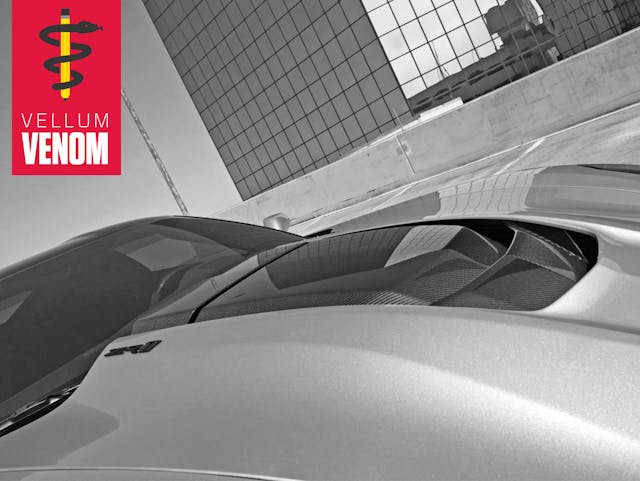
The 2019 Corvette ZR1 is on the verge of becoming a classic; the pinnacle of front-engine Corvette performance has an instant following among Corvette collectors of all ages. If current online chatter turns into a trend, ZR1s with seven-speed manuals and that massive rear wing (RPO ZTK) are likely the most desirable of the bunch. While heavily based on the Z06, the one-year-only ZR1’s functional styling upgrades play a part in its future prospects.
It’s hard to make other C7s look mundane or even malnourished, but the muscular ZR1 makes it clear General Motors broke the mold with this design, which we must examine on the vellum.

From the Corvette C3 L-88-worthy hood scoop, massive grilles, carbon-fiber downforce (designed with help from Pratt & Miller Engineering), and numerous hood creases, the ZR1 gives the viewer much to visually digest.

The unique bumper ensures the ZR1 looks like no other C7 and addresses cooling issues present in the Z06, forgoing the C7’s single grille for three massive speed holes with rhomboid textures for maximum airflow. The design is cohesive without conforming to any other element on the front end, which gives the body a road-hugging presence.
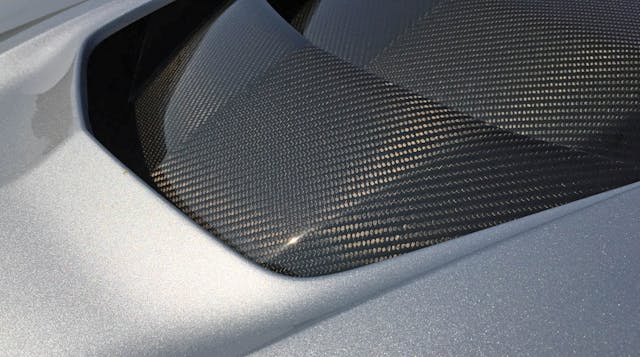
The big-block-worthy hood-bulge oozes Corvette DNA from its strong center line to its gently curved lip and carbon-fiber centers. The look is clean, functional, and muscular … provided you never step back.
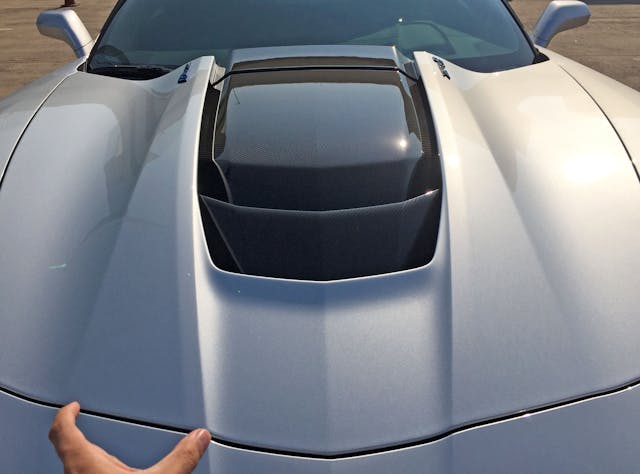
While the hood lines nearest to the scoop either conform to it or taper inward to make a “point” somewhere ahead of the front bumper, there’s an oddly placed wedge on each side that widens as it reaches the front. It’s an odd push/pull dynamic that kills the flow and detracts from that gorgeous scoop.
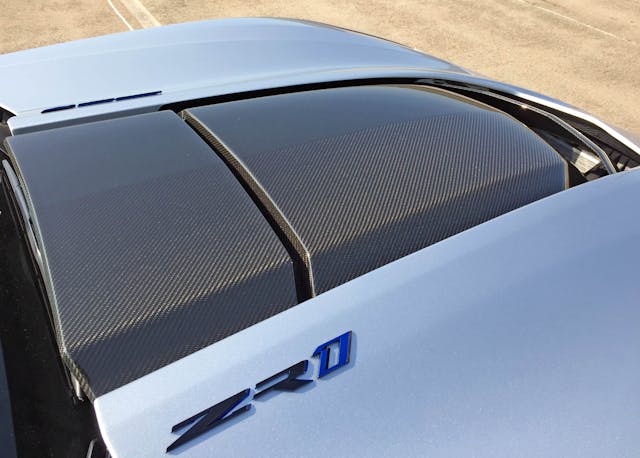
The hood bulge sports functional venting (vents at the right), room for the supercharger (center carbon-fiber panel) and a non-functional cowl-induction-style hood (left carbon-fiber panel). Note that the blue “1” in ZR1 is a throwback to its C6 “Blue Devil” forefather.
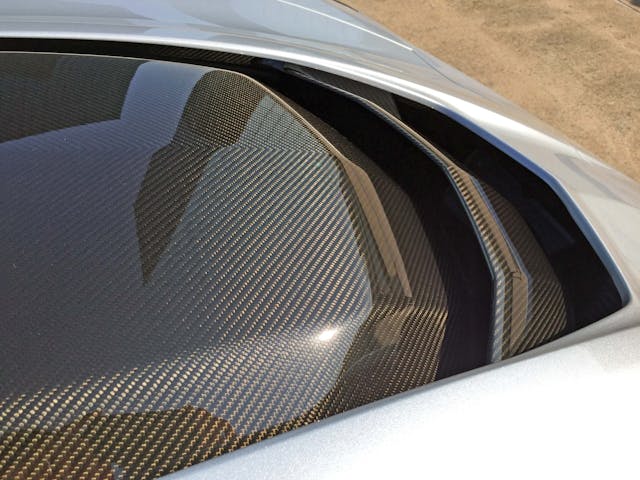
Note how the cooling vents have the same bends as the silver-finished hood.
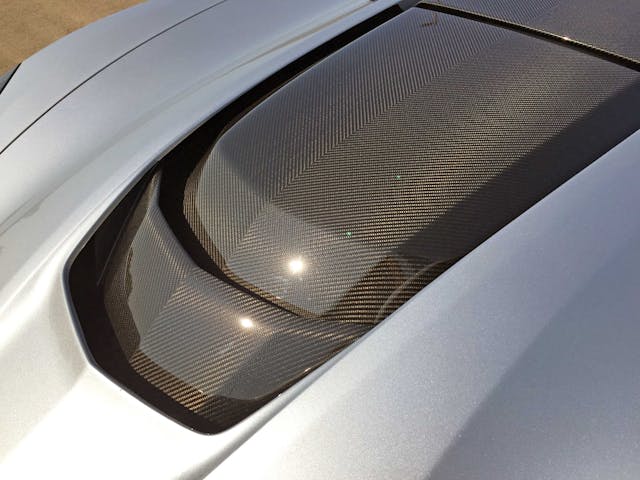
The carbon-fiber feels like an infinity pool against an endless horizon of silver paint.

Sadly, even with the hood open, the carbon-fiber hood is just a modesty panel for the LT5 engine’s supercharger.

Nor do you see anything under the scoop from behind the wheel. Bummer.
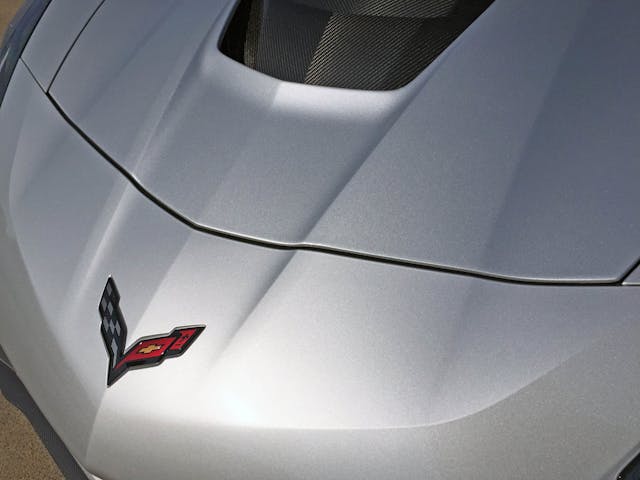
Thankfully, the hood’s ups/downs and push/pulls start after the bumper’s gentle crease and ahead of the Corvette logo. It feels like a 1993 Pontiac Trans Am …
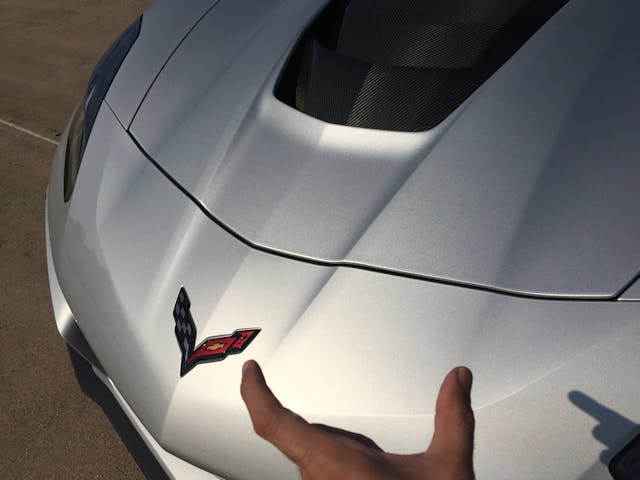
… Except the Trans Am designers wanted all the character lines to start off smaller and expand as they moved down the hood.
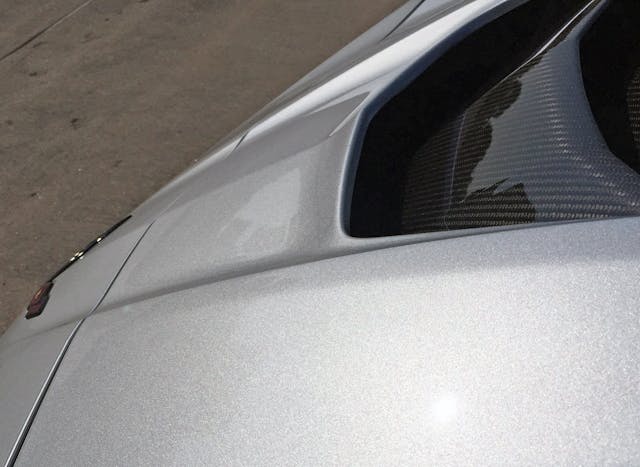
The ZR1’s contouring feels modest and more like a C6 Z06 from this angle.
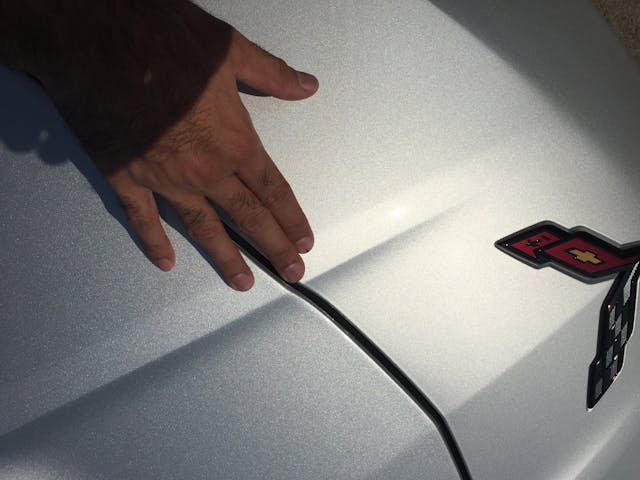
The 2019 Vette’s contouring (where my fingertips touch) is an elegant transition from the pointy bumper to what’s coming in the middle of the hood.
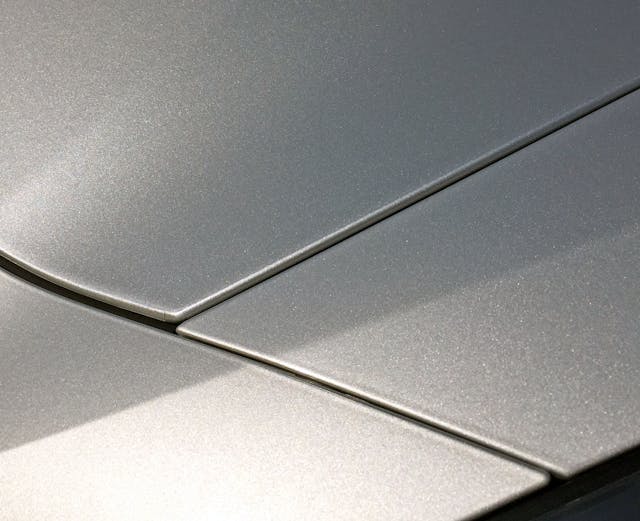
It’s a shame the hood couldn’t be a bit wider in order to match the fender crease right next to it.
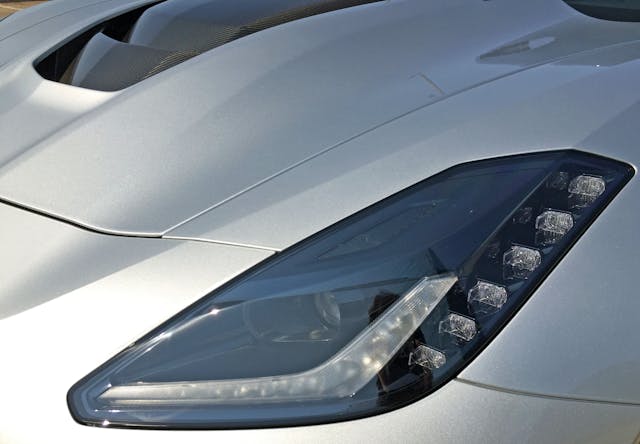
Even better, the hood could share the same cutline as the headlight (like a Lamborghini) to reduce visual clutter.
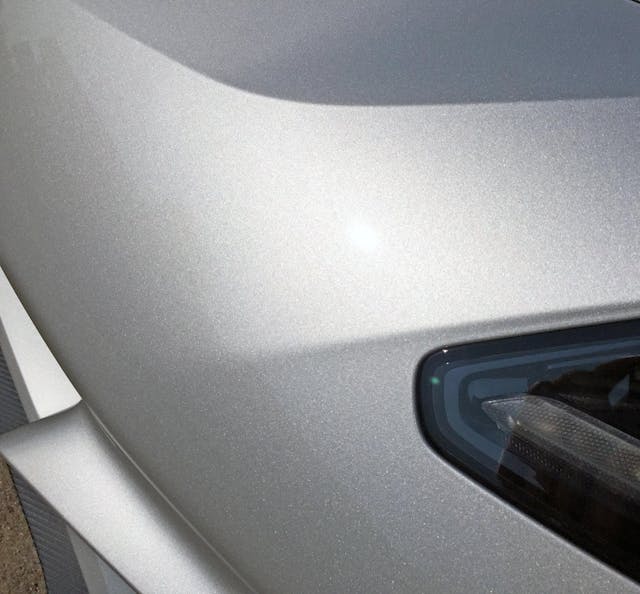
Apparently there’s another crease in the silver bodywork, showing everyone where the hood coulda been.
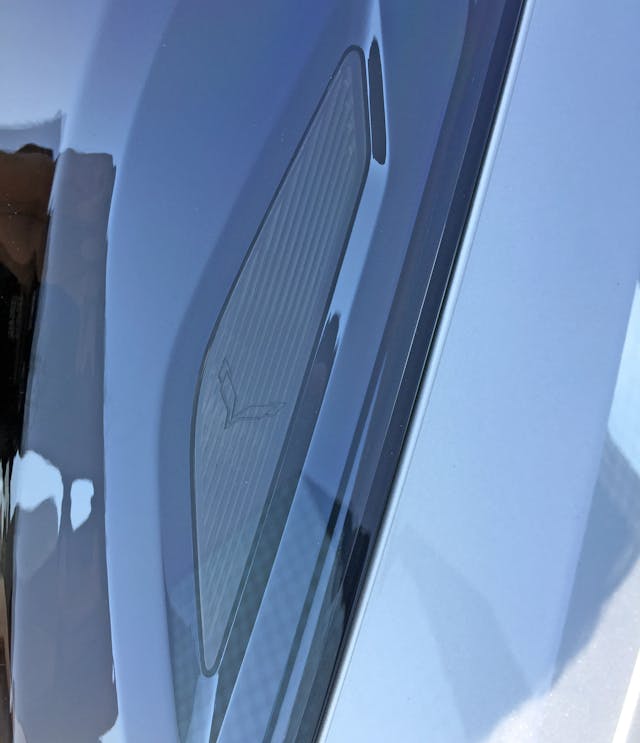
Logos within headlights are mandatory these days, but the C7’s winged easter egg is subtle compared to the rest of the ZR1’s front end.
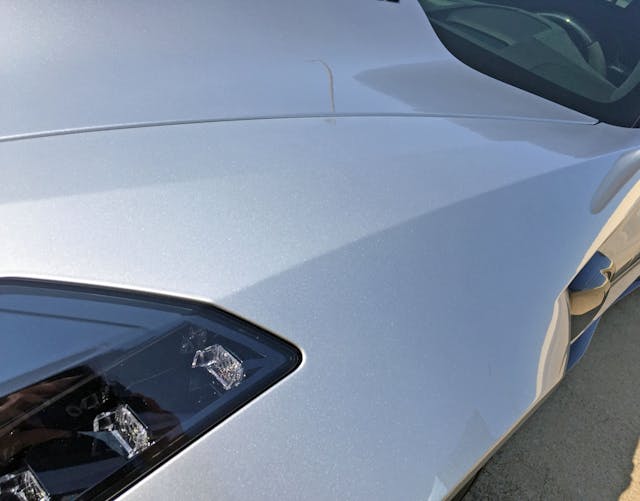
There’s likely an aerodynamic benefit to this final crease atop the fender, but rounding off something—anything—on the front clip would make the ZR1’s muscles relax a little.
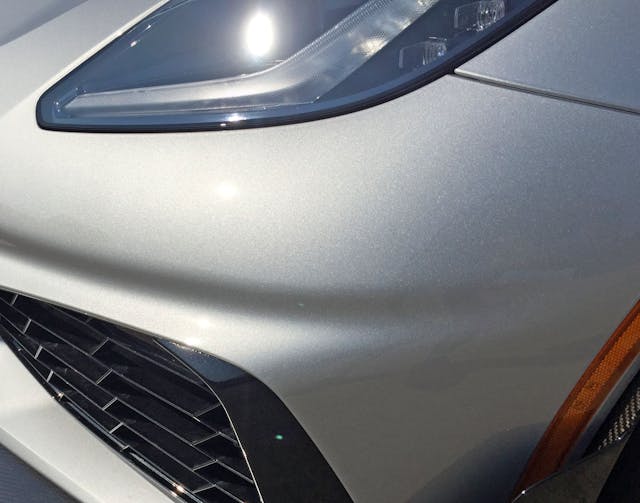
Now we know where the C8’s bumper jowl came from, though it’s less pronounced here.
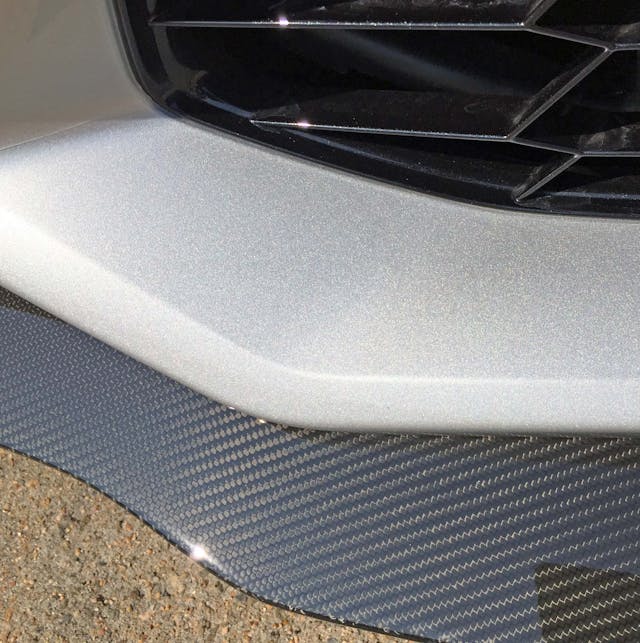
If only the hood sported complementary lines, as seen here with the bumper and splitter. There’s even an extra matching contour in the bumper, which adds extra definition.
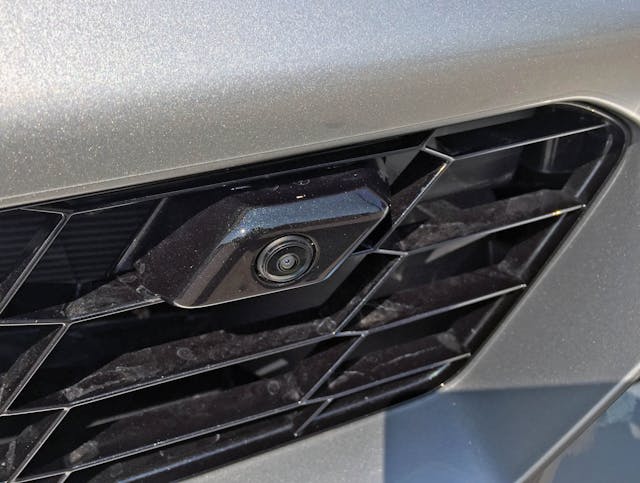
Sensors inside the ZR1’s grilles do not draw attention to themselves.
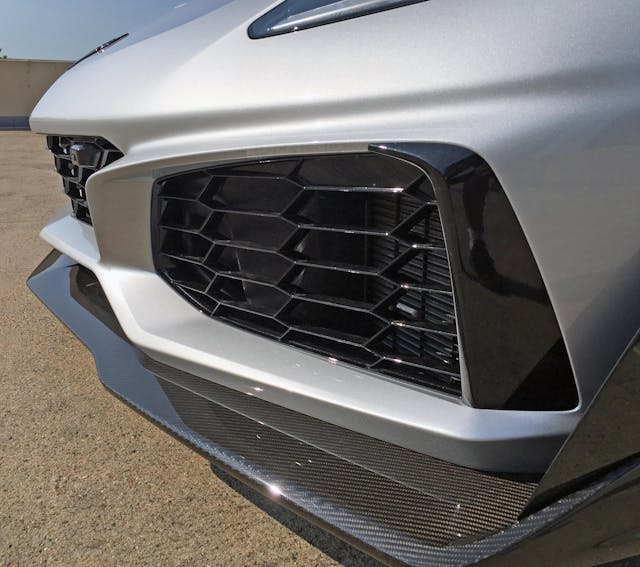
Note how the shiny black grille extensions keep the corner’s oversized grilles (that also extend further than the center grille) from looking chubby.

That grille extension integrates with bumper’s outer contours, while the splitter’s forward thrust has no interest in the rest of the car’s intentions. That’s how splitters tend to behave!
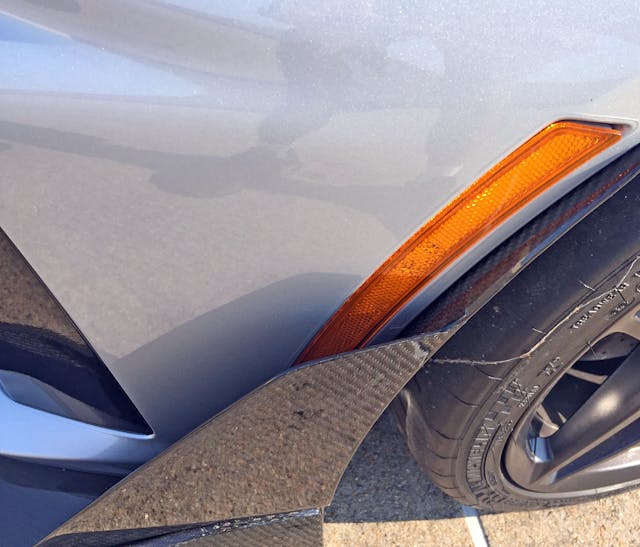
It’s a shame the splitter’s winglet/Gurney flap covers a portion of the amber light, but adding high-dollar aero to an affordable supercar inevitably creates design compromises.
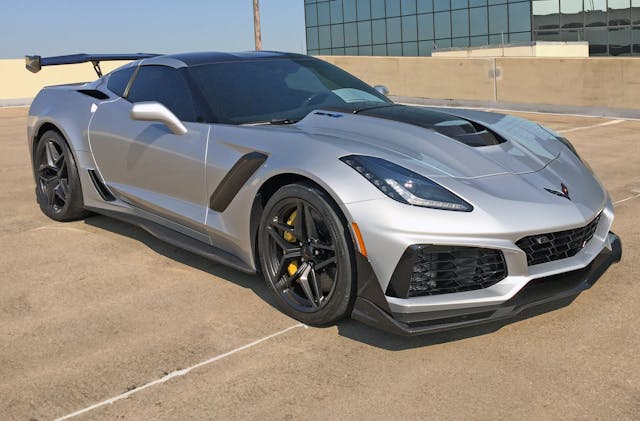
The high-rise hood’s confusing contours blend into chiseled planes and muscular creases. The oversized air-management tools fight for your attention, but there’s definitely a C3-worthy long hood/short deck muscle car in there, somewhere.
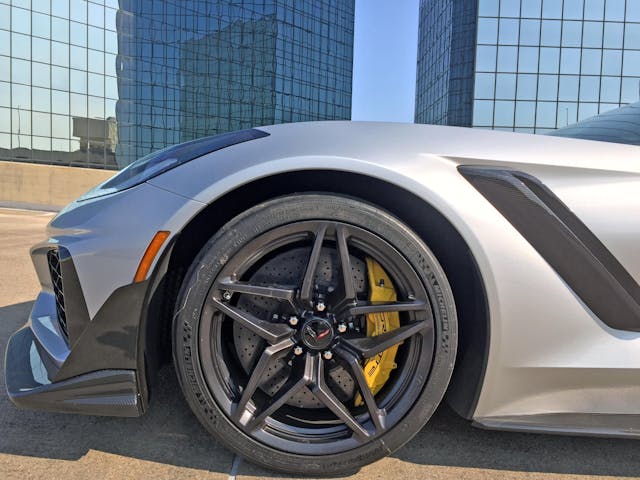
The busyness continues with multiple rocker panel creases and a massive fender-mount cooling duct. With the afternoon sun reflecting on every silver-toned crease, there’s little chance for your eyes to relax on a fender’s subtle upper contour or the long lines flowing behind the front wheel.

Unique split five-spoke wheels are surprisingly clean and distraction-free, but this is far from a boring design.

Make note of the transition from thick to thin as the spokes leave the hub for the outer rim. This dramatic change gives the wheel a sense of motion depending on the light source, often tricking the eye into believing these are directional wheels.

Don’t you “feel” the wheel spokes twisting counterclockwise, especially at the rear?
A full sideview shows fewer functional distractions. The rocker panel sucks inwards at the middle to remove visual bulk. The door has an upper crease that turns into a broad shoulder line for the quarter panel. The greenhouse complements both this curve and the roofline without resorting to DLO FAIL like its C8 replacement. Still, the door’s strong lower crease makes no sense when it slams into the rear brake ductwork: The C6 Z06 did it better.
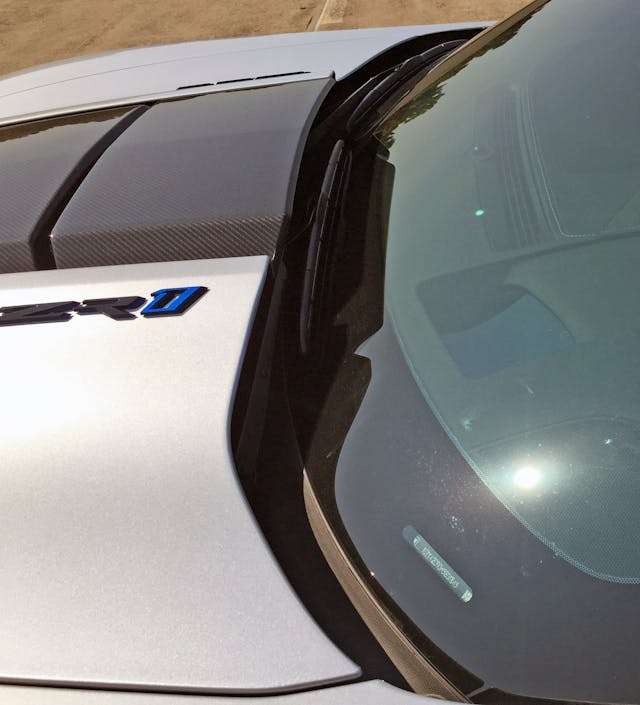
The C7’s already clean cowl looks cooler with a ZR1 hood dropping layers of shadows over the windscreen.
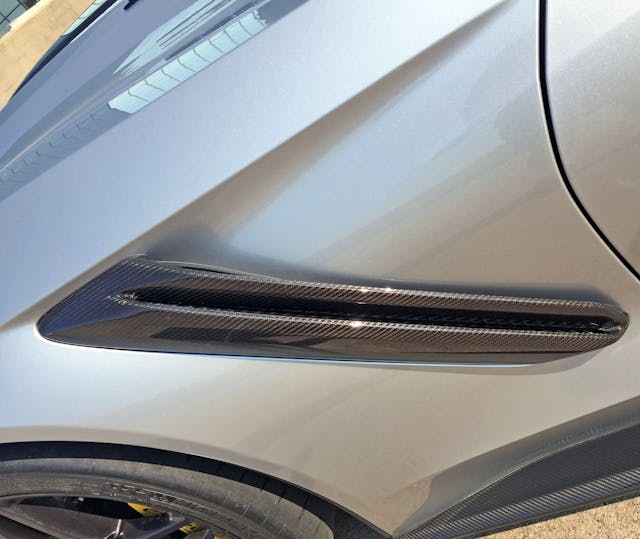
This two-tiered, carbon-fiber cooling vent complements the hard fender crease and the gentle curve in the fender’s cross section.
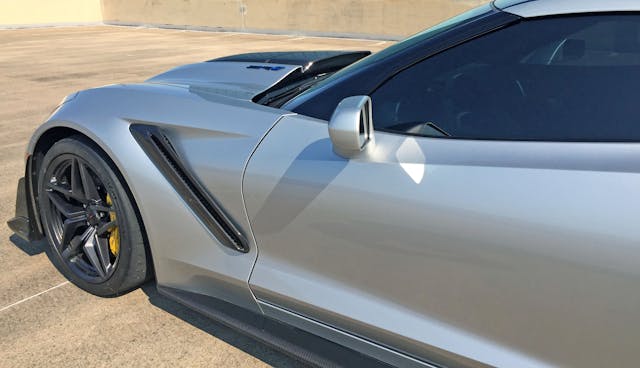
It’s unfortunate that the fender crease (above the cooling vent) doesn’t meet the upper door crease to integrate the entire form. The two streaks fight each other, much like the push/pull elements on the hood.

It’s unfortunate that the carbon-fiber rocker extension couldn’t keep its width uniform along the rocker panel; perhaps there’s an ergonomic concern regarding ingress and egress.
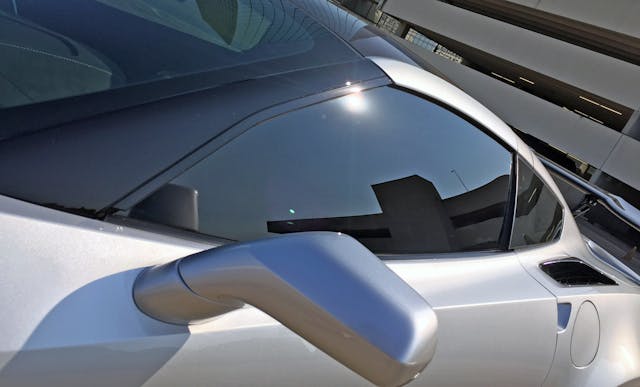
That upper door crease/shoulder line is a natural place for a sideview mirror and another cooling duct. The latter looks absolutely perfect in that space, assuring everyone this is a track-ready Corvette.
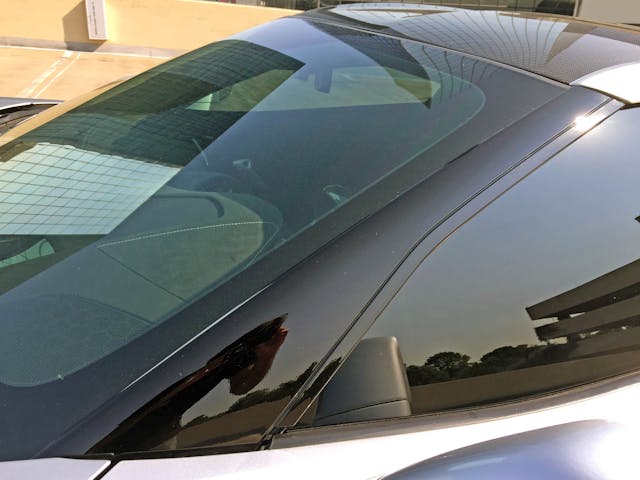
Shiny black plastic does a fantastic job masking the thickness of the A-pillar and keeps the greenhouse flowing from windshield to door glass.
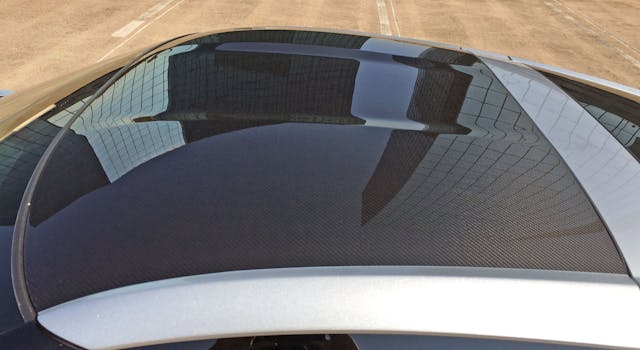
Carbon fiber likely shaves weight in the best place, and the outer edges are painted to ensure continuity between this panel and the B-pillar’s “hoop.”
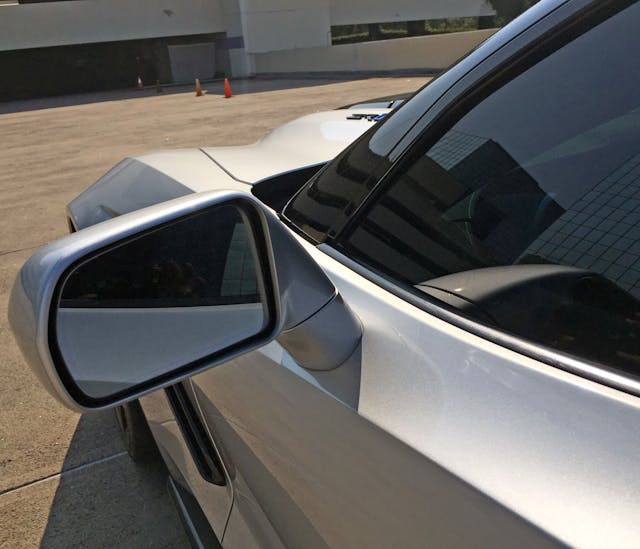
The sideview mirrors’ vertical drop (on the right-hand side) makes a statement against the bodyside’s slashes and swoops.
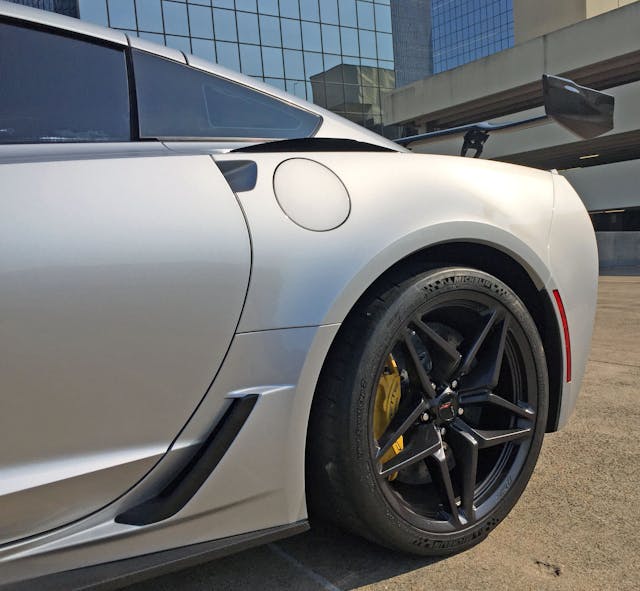
Integrating a door-handle cup, fuel door, and two cooling scoops onto a small quarter panel is difficult.
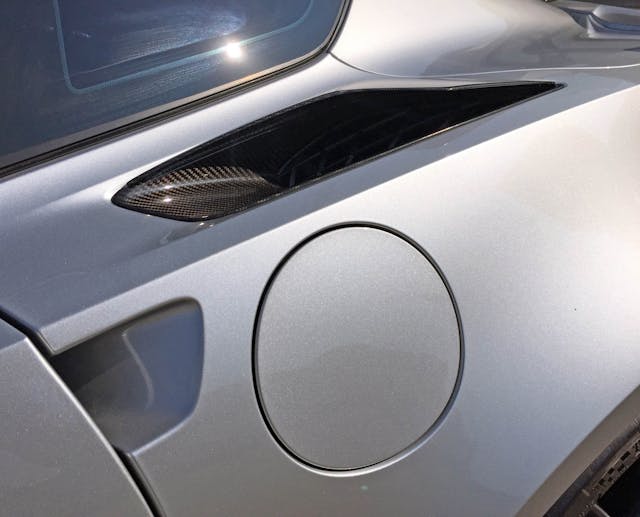
The fuel door is smeared into the fender flare, unable to retain a perfectly round form. Considering the lack of roundness elsewhere (C7s abandoned round taillights) making the door more rectangular woulda helped.

A boxy fuel door would complement the cooling duct and its carbon-fiber cantilevered cover.
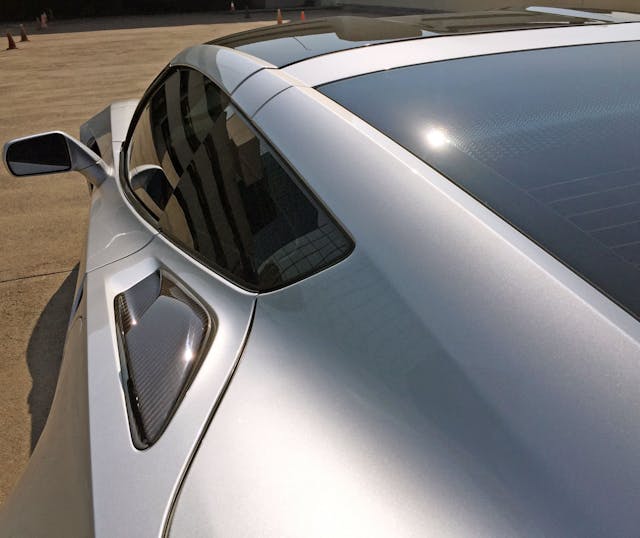
From the rooftop crease to the smooth contours in its shoulders, there’s a nice balance of flowing lines and muscular forms in the quarter panel. It’s unfortunate the hood couldn’t emulate this.
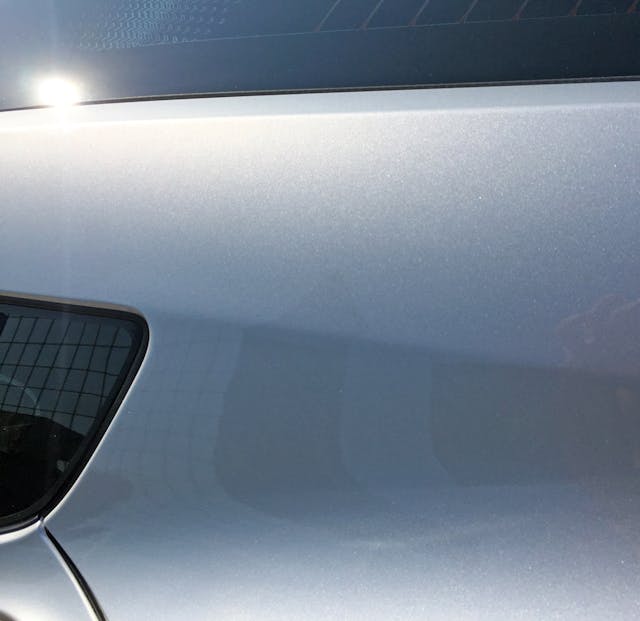
The subtle crease extending past the quarter window is a nice touch, a feature that didn’t translate well into the 2020 C8’s contrived body. Both generations implemented tacky Corvette-logo easter eggs into the rear window (top edge), but their presence is muted with window tinting.
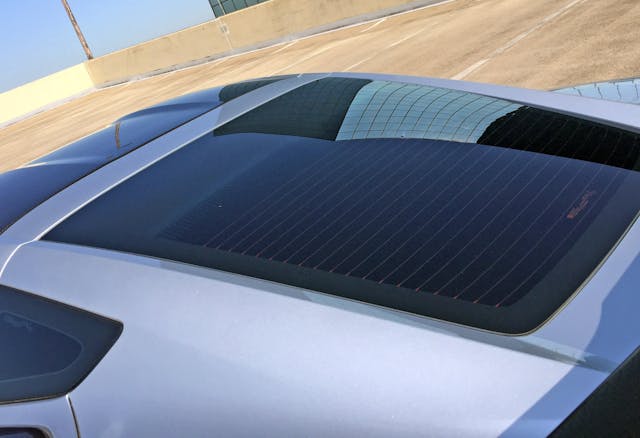
The quarter window’s crease disappears quickly, letting the eyes focus on the stronger creases forcefully pushing down the C7’s rear window.
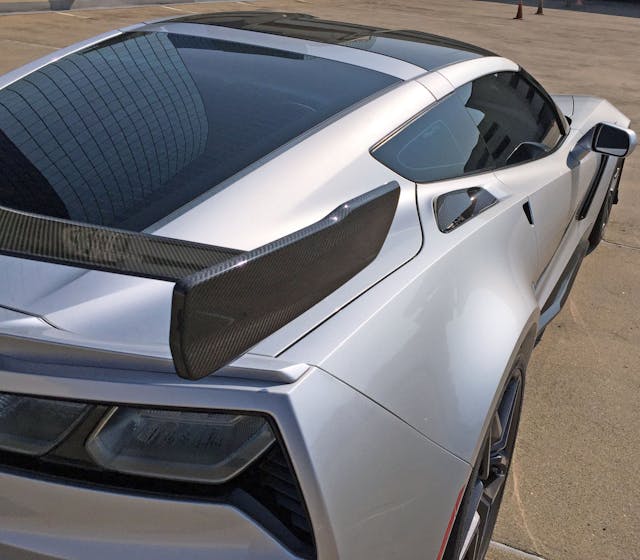
It’s a hunkered-down and serious-looking affair, thanks in part to the ZTK-exclusive rear spoiler. Hard to believe these Corvettes also have a useful hatchback, too.
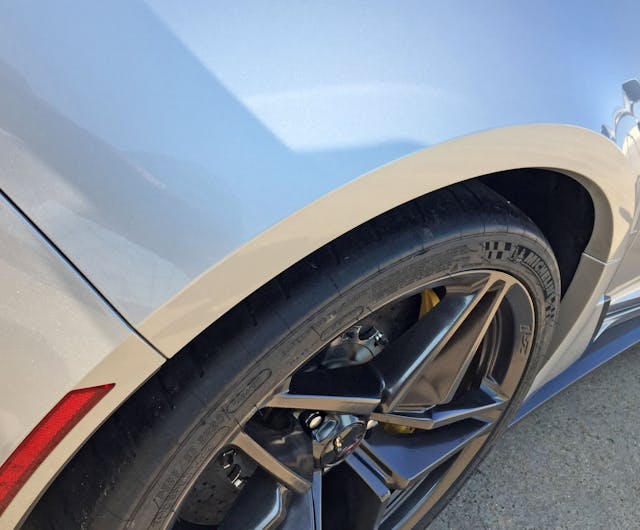
Hopefully one day we don’t need to live in a world with hard fender-arch creases and the uninspired marker lights that every automaker slaps inside them.
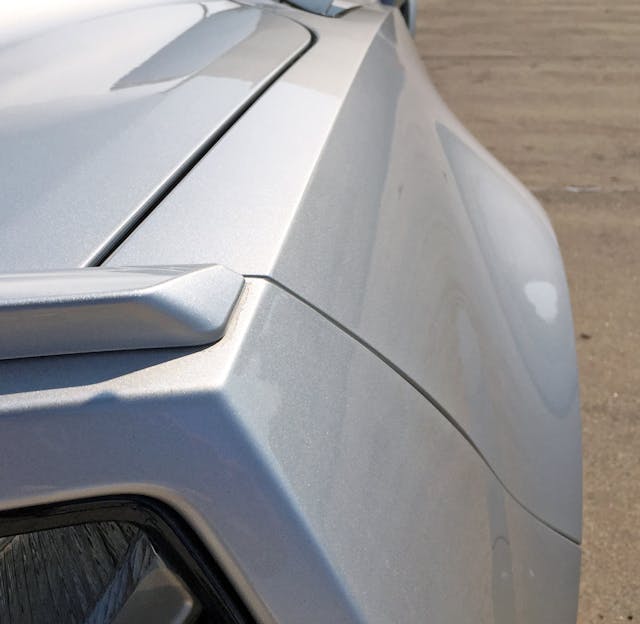
The flared fenders make a wavy cutline at the rear fascia …which is fine, but the ZTK-equipped ZR1 still has the regular, painted spoiler, too?
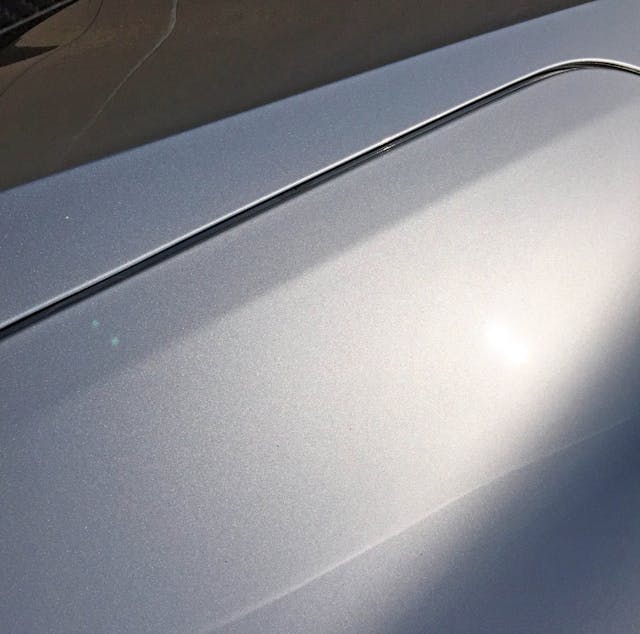
Much like the hood, the rear hatch cutline doesn’t match the natural crease presented about an inch inboard.
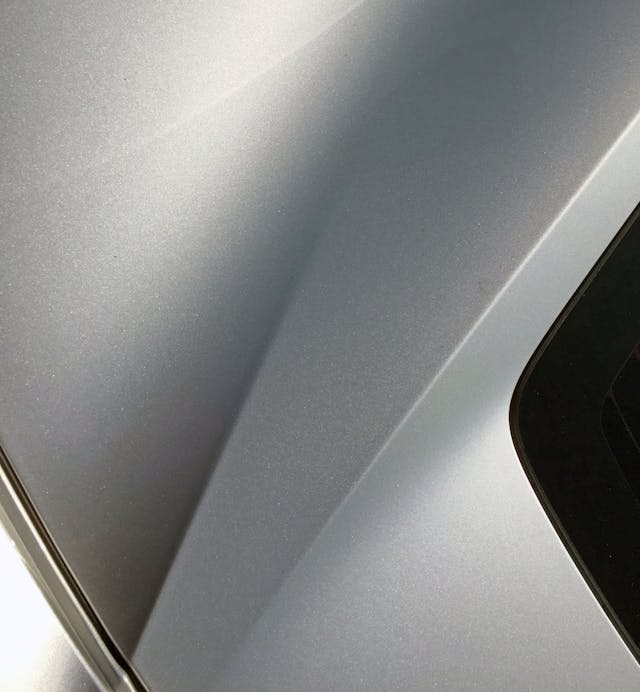
Another lovely crease tapers inward, giving the C7 the feel of a C2 Sting Ray rear window.
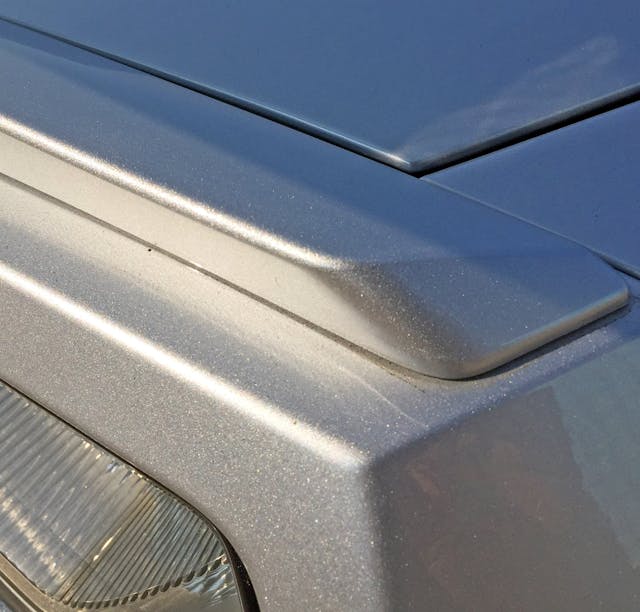
The fascia ends at (almost) right angles, but the spoiler has a swoopy curve at its corner: an odd mismatch.
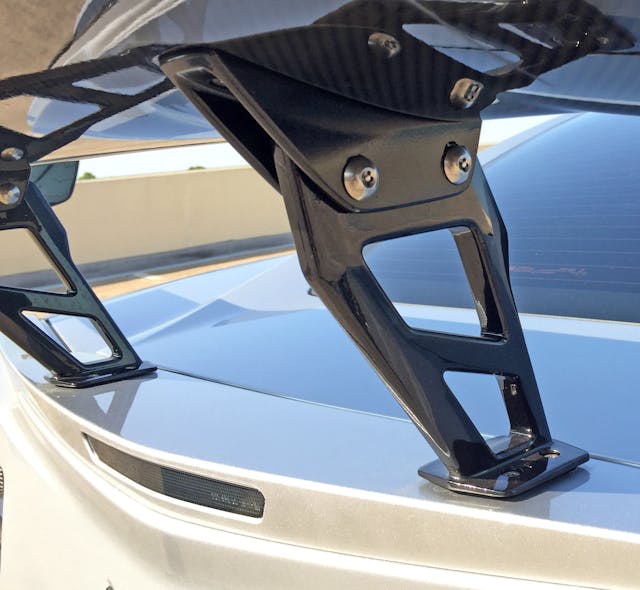
The base spoiler must remain so the ZR1 has a CHMSL? Supercar performance for cheap is beyond acceptable, and the bolt-on ZTK spoiler proves the need for function over form.
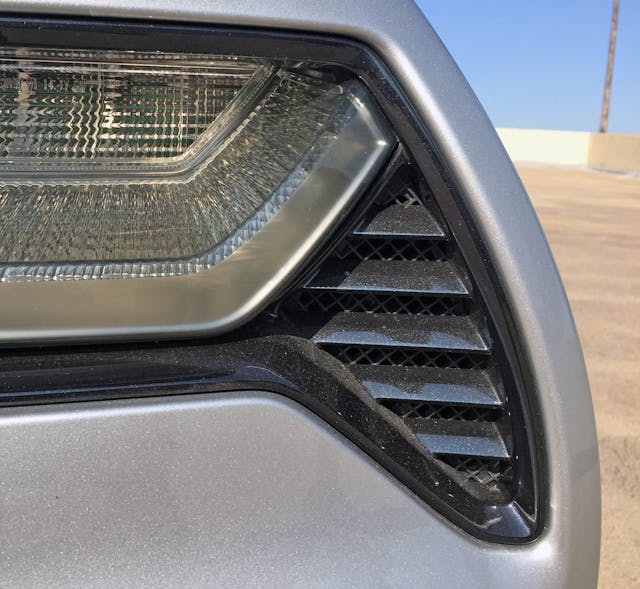
The functional rear ducts look like a jailhouse teardrop tattoo against the ZR1’s taillight “eyes.”
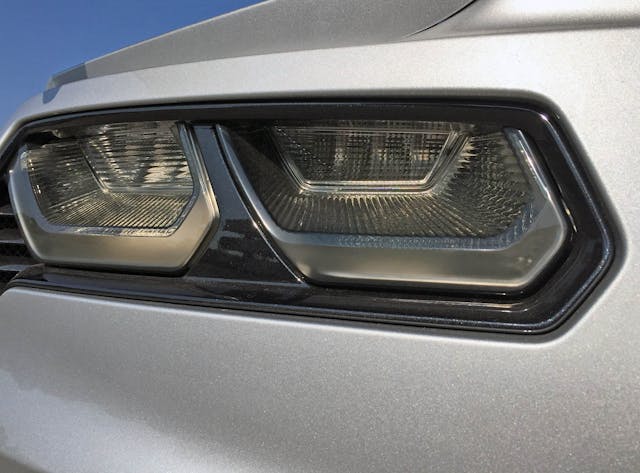
Camaro-esque taillights are now also a Corvette hallmark (because only wheels and fuel doors can be round now?); at least the Z06/ZR1 lights get the ricey Altezza treatment.
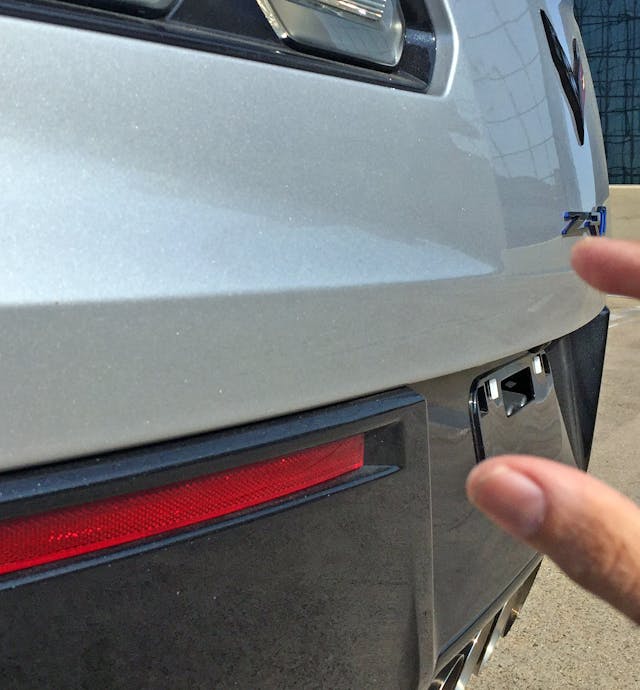
While the aforementioned fender vs. door crease mismatch can grate upon one’s eyes, these two pointed creases do not conflict: They live on separate panels with different colors.
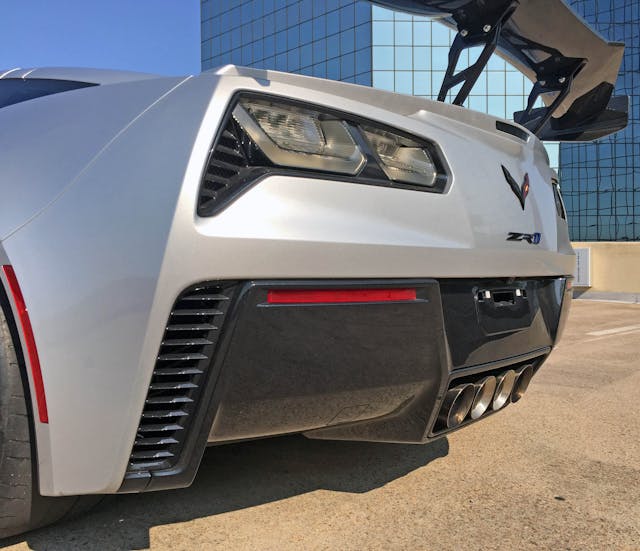
That gloss black lower valence is something extraordinary thanks to those massive vents! If only the teardrop vents above were the same width.
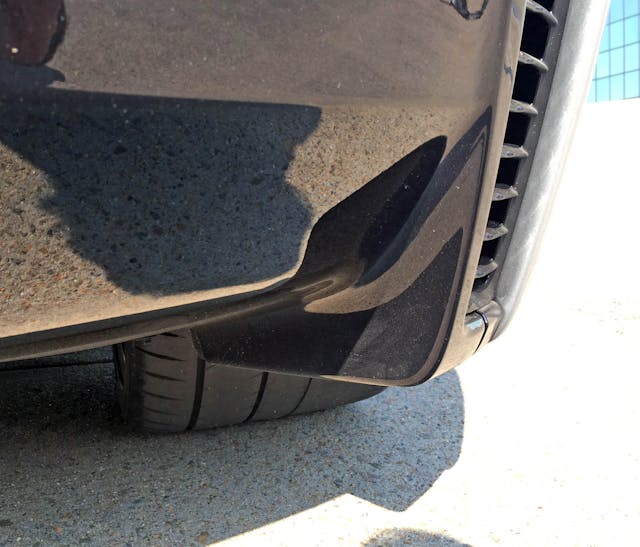
Remember that strong vertical line in the sideview mirror? Meet its impressively integrated big brother.

The tailpipes and license plate are elegantly bound together thanks to a trapezoidal form that tucks inside the body as it reaches the ground.
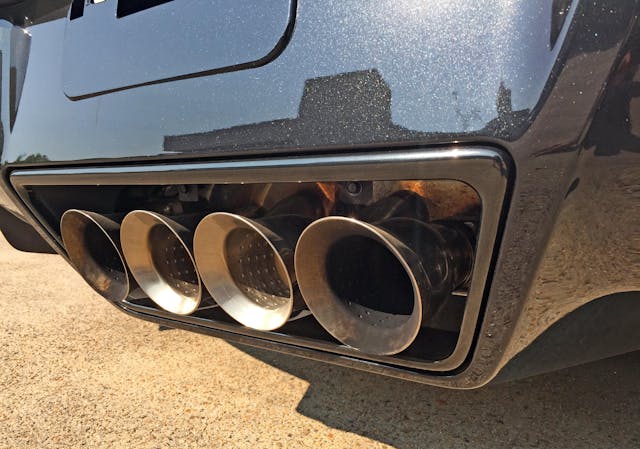
A second trapezoidal frame highlights clean inner pipes, suggesting this example rarely ran at full throttle.
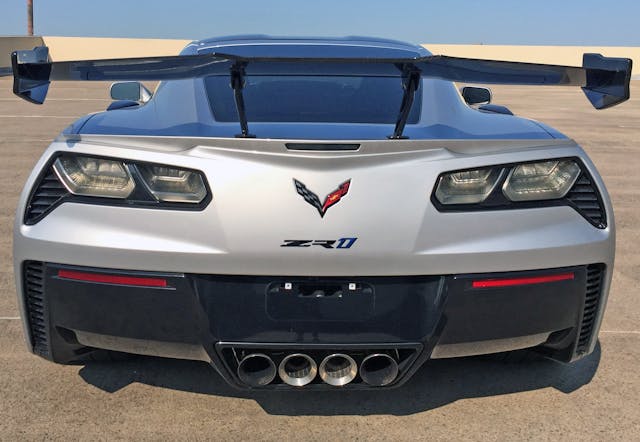
The black taillight buckets, spoiler, and lower valence add a sense of depth and intensity to the posterior. Round taillights would not work here, and every C7’s look is far more aggressive than that of its C6 predecessor.
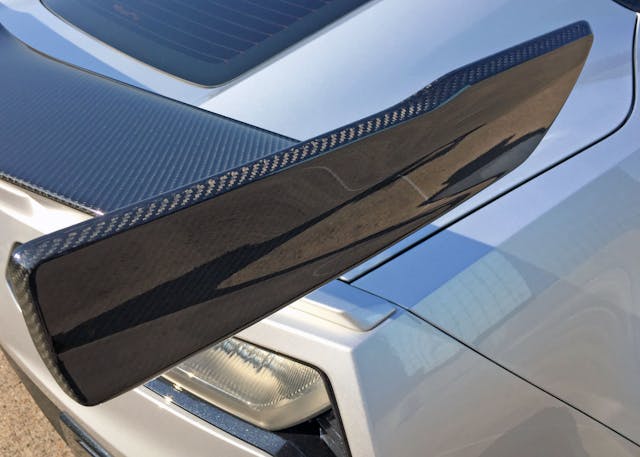
Perhaps there’s a functional reason why the spoiler’s endcaps are taller at the front and shorter at the back.
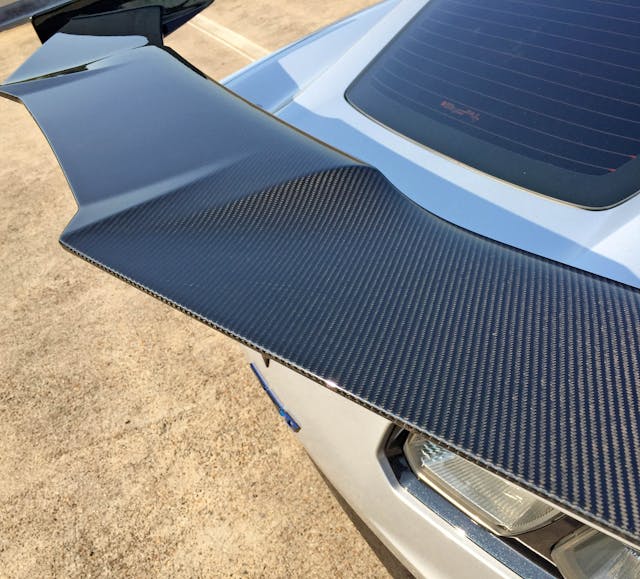
Comparing any C7 to a Batmobile is an easy connection, but the intersection of three horizontal elements (left, right, and center planes) on the ZTK spoiler deserves a bat-wing reference.
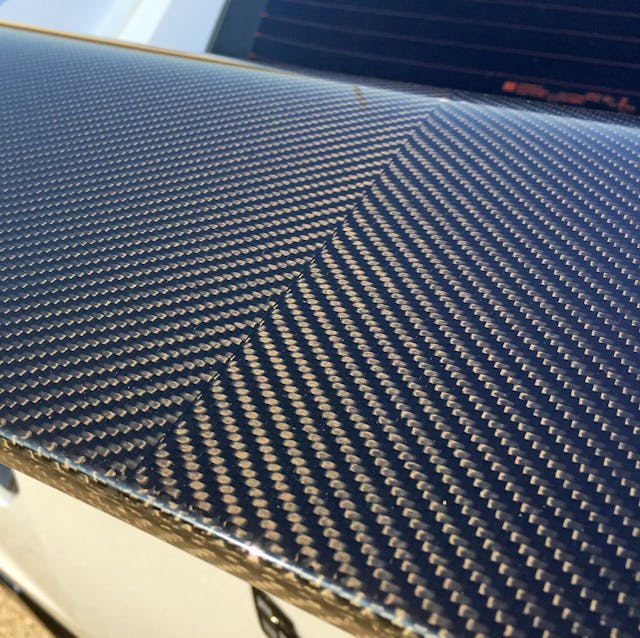
The ZR1’s tremendous value proposition is seen in the central meeting of carbon-fiber sheets: Designers of some expensive European supercar would make this from a single sheet to keep the weave consistent …
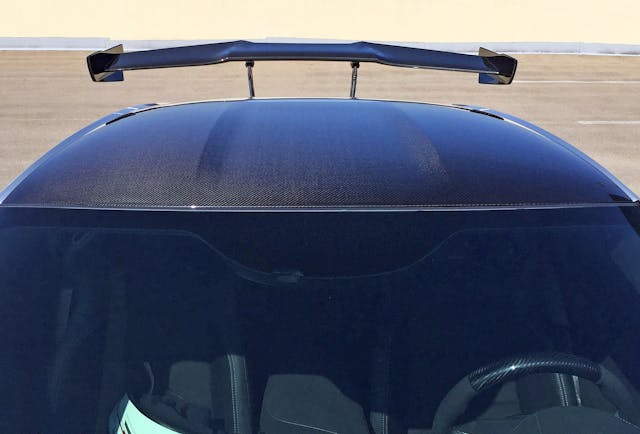
… which is irrelevant when you have this much carbon fiber on a homegrown hero with such an imposing stature.

Like the short overhang and brutally sharp side-to-back transition, the one-year-only ZR1 was an abrupt ending to the C7 Corvette generation. This brief tenure only adds to its allure, as being The Best of the Last has its advantages: ZTK-equipped ZR1s cast a long shadow for front-engined Corvette fans.
The Corvette ZR1 punctuates the American desire to attain the downright vulgar (power, downforce, all-you-can-eat buffets) at an unbeatable asking price, only to drop it all for something new and even more freaking awesome next year. The 2020 C8 is unquestionably a better platform, but the ZR1 proves we were lucky to experience 2019.
Thanks for reading. I hope you have a wonderful week.


I still prefer the smoother and rounder C6 ZR1 styling but I do appreciate the function that goes into this cars styling.
I think a lot of those weird conflicting creases are aero inspired. For me, the best part about the C7 is that from front 3/4 views, it doesn’t have that bulbous looking back end like the C5 and C6 before it.